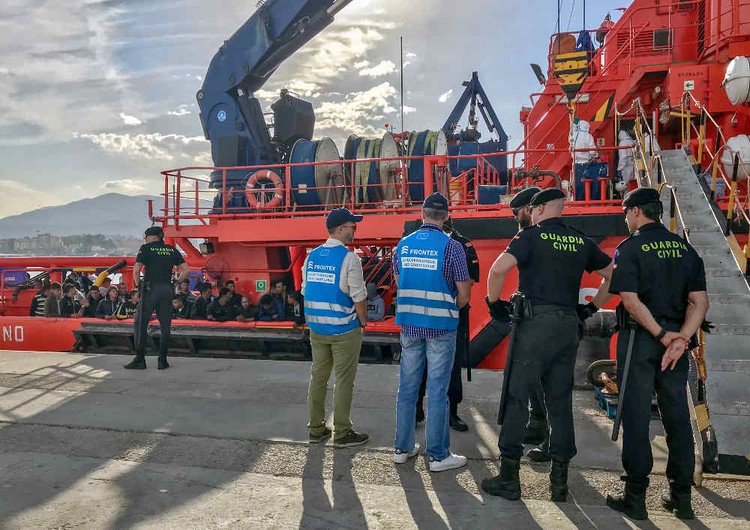In the first eight months of 2018, the number of irregular border crossings into the EU via the top four migratory routes fell 40 per cent from a year ago to about 86 500, mainly because of lower migratory pressure on the Central Mediterranean route.
In August, some 12 500 irregular crossings were detected on the main migratory routes into the EU, roughly in line with the number from the same month of last year.
Western Mediterranean
For the second consecutive month, the
Western Mediterranean migratory route accounted for more than half of
all detections of illegal borders crossings into the EU. The number of
migrants reaching Spain more than doubled from a year ago to nearly 6
500 in August.
In the first eight months of 2018, there were some 29
600 irregular border crossings on the Western Mediterranean route, more
than double the figure from a year ago.
Nationals of Morocco, Guinea
and Mali accounted for the highest number of arrivals in Spain this
year. Migrants from sub-Saharan countries represented more than
three-quarters of all detections on this route. The presence of some
nationalities that in the past had mainly passed through Libya indicate
that some migratory flows may have shifted to the Western Mediterranean
route.
Eastern Mediterranean
In August, the number of
irregular migrants taking the Eastern Mediterranean route stood at some 4
200, 11% less than a year ago. But largely because of a significant
increase of irregular crossings in recent months on the land border with
Turkey, the total number of migrants detected on the Eastern
Mediterranean route in the first eight months of the year rose by 58% to
around 34 300.
The largest number of migrants on this route so far
this year were nationals of Syria and Iraq, although Afghans accounted
for the largest number in August.
Central Mediterranean
The
number of migrants arriving in Italy via the Central Mediterranean
route in August fell to about 1 500, down 62% from August 2017. The
total number of migrants detected on this route in the first eight
months of 2018 fell to roughly 19 600, 80% lower than a year ago.
So
far this year, Tunisians and Eritreans were the two most represented
nationalities on this route, together accounting for more than one-third
of all the detected migrants there.
Western Balkans
The main
migratory route in the Western Balkans from Serbia to Hungary and
Croatia continues to see low numbers of irregular migrants. However, a
parallel route via Albania, Montenegro and Bosnia and Herzegovina, as
well as from Serbia to Bosnia Herzegovina, has seen continuing migratory
pressure.
Note: The data presented in this statement refer to
the number of detections of irregular border-crossing at the external
borders of the European Union. The same person may attempt to cross the
border several times in different locations at the external border.
